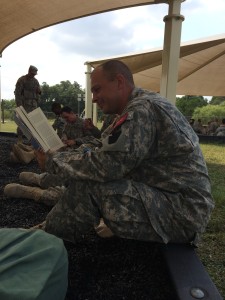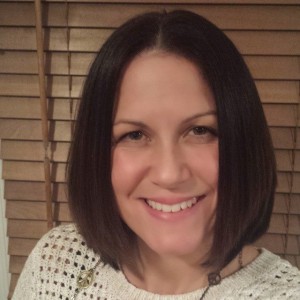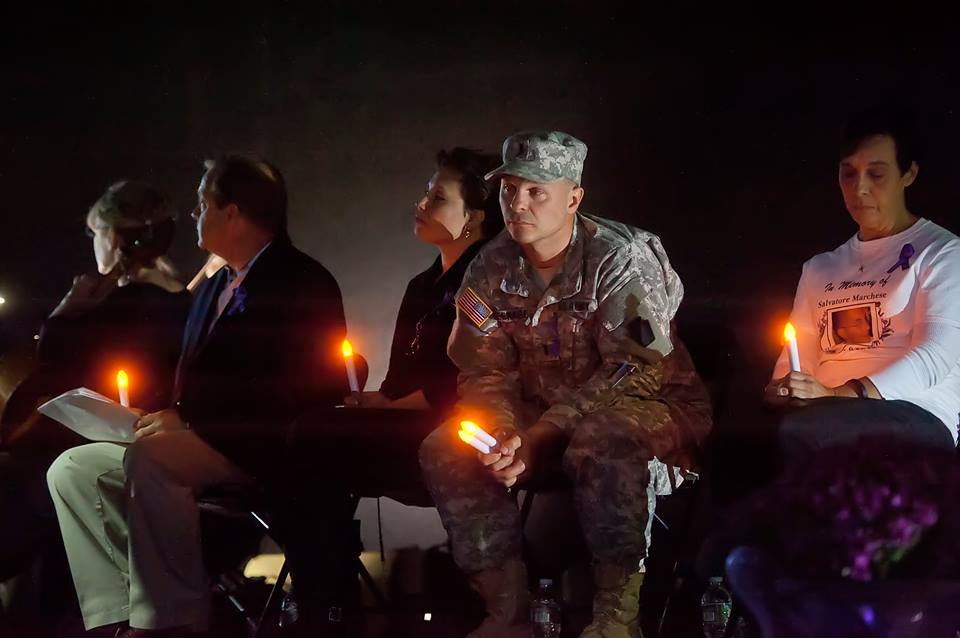Dreamland is the “true tale of America’s opiate epidemic. It was written by Sam Quinones, a journalist who lives in Southern California, and published in 2015 by Bloomsbury. Mr. Quinones’s book examines the whole swath of the heroin problem, and he goes into minute detail to explain the roles played by the pharmaceutical industry, doctors, politicians, researches, drug traffickers, law enforcement, addicts and their families.
I was skeptical when I first heard about the book, because only a few people that I’ve spoken with have been able to see how a multitude of institutions are involved and effected. I have been exceedingly impressed by Dreamland. I will be interviewing Mr. Quinones on December 14th and that interview will be published (on another site) later next week. Both Mr. Quinones and Bloomsbury have granted me permission to publish a chapter from his book on this site. It is called “The Poppy” and it provides an excellent, four-page account on the history of opium and the rise of heroin use in America. Readers might shudder when they see the parallels between heroin at the start of the 20th century and Oxycotin at the dawn of the 21st century.
______________________________________________________________________
“The Poppy”
The story of the opium poppy is almost as old as man.Opium was likely our first drug as agricultural civilizations formed near rivers. Mesopotamians grew the poppy at the Tigris and Euphrates. The Assyrians invented the method, still widely used today, of slicing and draining the poppy’s pod of the goo containing opium. “The Sumerians, the world’s first civilization and agriculturists, used the ideograms hul and gil for the poppy, translating it as the ‘joy plant,’” wrote Martin Booth, in his classic Opium: A History.
The ancient Egyptians first produced opium as a drug. Thebaine, an opium derivative, is named for Thebes, the Egyptian city that was the first great center of opium-poppy production. Indians also grew the poppy and used opium. So did the Greeks. Homer and Virgil mention opium, and potions derived from it. The expanding Arab empire and later the Venetians, both inveterate traders, helped spread the drug.
Early civilizations saw opium as an antidote to the burdens of life— to sorrow and to pain—and as an effective sleep inducer. They also knew it as lethally poisonous and intensely habit-forming. But its bene- fits made the risks easy to overlook.
In the early 1800s, a German pharmacist’s apprentice named Friedrich Sertürner isolated the sleep-inducing element in opium and named it morphine for Morpheus, the Greek god of sleep and dreams. Morphine was more potent than simple opium and killed more pain.
War spread the morphine molecule through the nineteenth century. More than 330 wars broke out, forcing countries to learn to produce morphine. The U.S. Civil War prompted the planting of opium poppies in Virginia, Georgia, and South Carolina for the first time, and bequeathed the country thousands of morphine-addicted soldiers. Two nineteenth-century wars were over the morphine molecule itself, and
whether China could prevent the sale on her own soil of India-grown opium. The drug provided huge revenues essential to the British Empire and was one of their few products for which the self-sufficient Chinese showed an appetite. That it lost two of these Opium Wars to the British explains China’s infamous and widespread opium problem in 1900 where only moderate numbers of addicts existed in 1840.
In 1853, meanwhile, an Edinburgh doctor named Alexander Wood invented the hypodermic needle, a delivery system superior to both eating the pills and the then-popular anal suppositories. Needles allowed more accurate dosing. Wood and other doctors also believed needles would literally remove the patient’s appetite for the drug, which no longer had to be eaten. This proved incorrect. Wood’s wife became the first recorded overdose death from an injected opiate.
In the United States, more opium came with (newly addicted) Chinese immigrants, who smoked it in back-alley dens within Chinatowns in San Francisco and elsewhere. Opium dens were outlawed, and after Chinese immigration was made illegal, the practice of smoking opium eventually declined, too. Morphine replaced it.
Patent medicines with morphine and opium, meanwhile, were sold as miracle cures. These elixirs were branded with names evoking quaint home remedies. Opium was the active ingredient in, for example, Mrs. Winslow’s Soothing Syrup, which was used to pacify children. These remedies were marketed aggressively in newspapers and popular media. Patent medicines sales exploded, rising from $3.5 million in 1859 to almost $75 million by the twentieth century.
In London in 1874, Dr. Alder Wright was attempting to find a nonaddictive form of morphine when he synthesized a drug that he called diacetylmorphine—a terrific painkiller. In 1898, a Bayer Laboratory chemist in Germany, Heinrich Dreser, reproduced Wright’s diacetylmorphine and called it heroin—for heroisch, German for “heroic,” the word that Bayer workers used to describe how it made them feel when Dreser tested it on them.
Heroin was first believed to be nonaddictive. Heroin pills were marketed as a remedy for coughs and respiratory ailments. With tuber- culosis a public health threat, this was no small point. As junkies ever since have discovered, heroin is an effective constipator and was thus marketed as an antidiarrheal. Women used it, on doctor’s orders, for menstrual cramps and respiratory problems. Doctors didn’t have much else to prescribe for pain or disease. Thus addiction exploded—to a drug that people believed was safe because doctors said so.
This aroused U.S. public opinion, which forced the passage of the Harrison Narcotics Tax Act of 1914. The law taxed and regulated opiates and coca-leaf products, while allowing doctors to use them in the practice of medicine. But it was transformed into America’s first prohibition statute when police started arresting doctors for prescrib- ing opiates to addicts. Addiction was not yet considered a disease, so an addict technically wasn’t a medical patient.
Physicians soon stopped prescribing the drugs. People with real pain were left to endure. Addicts, meanwhile, turned to crime. “[Because the addict] is denied the medical care he urgently needs,” one medical journal reported, “he is driven to the underworld where he can get his drug . . . The most depraved criminals are often the dispensers of these habit-forming drugs.”
A government campaign demonizing “dope fiends” followed, aided by a compliant media. The addict was a deviant, a crime-prone, weak- willed moral failure. This idea stuck and informed the view of junkies for decades. The mythic figure of the heroin pusher also emerged. He supposedly lurked around schoolyards and candy stores, giving youths habit-forming dope, hoping for future customers.
With slight medical benefits compared to its high addiction risk, heroin ought to have passed into history. Instead, heroin replaced morphine on the streets. It thrived because it was tailor-made for dope traffickers. Heroin was easy to make, and cheaper than morphine. It was also more concentrated, and thus easier to hide and more profitable to dilute. The highs, and the lows, too, were quicker and more intense than those of other opiates. An addict craved heroin several times a day, and physically had to have it to function; so he was a terrific customer.
Traffickers and mafias made heroin’s career. New York established itself as the country’s heroin center in part because the drug’s early manufacturers were located there. Once heroin was made illegal, it came clandestinely through the city’s port from Europe and Asia. New York’s immigrants sold it on the street: Chinese and European Jews, among them, and much later, Puerto Ricans, Colombians, and Dominicans. The logic of heroin distribution allowed New York to remain the nation’s principal heroin hub through most of the twentieth century. While the drug came mostly from Asia, the Middle East, or Colombia, the drug was taken in at New York’s port, distributed by endlessly replenished immigrant or black gangs, and from there sent up and down the East Coast and into the Midwest.
Marijuana, like wine, has been hybridized into endless varietals. But heroin is a commodity, like sugar, and usually varies only in how much it’s been cut—that is, diluted—or how well it’s been processed and refined. Thus, to differentiate their product, dealers learned to market aggressively, and New York City is where they learned to do it first.
Italians apparently led the way. In the 1930s, “an aggressive new generation of Italian gangsters began infiltrating the drug traffic, replac- ing other groups, notably the Jews,” wrote historian David Courtwright in Dark Paradise, his history of opiate addiction in America. “Not only did the price increase, but the level of adulteration as well.”
New York’s Italians pioneered heroin pushing, giving free samples to new customers. Their weak dope made injecting it popular. Injecting heroin sent what little heroin was in the dose directly to the brain, maximizing euphoria. Injecting begot nasty public health problems— among them, later, ferocious rates of hepatitis C and HIV. (Mexican black tar added to them. Because tar is a semiprocessed, less-filtered form of heroin, the impurities that remain in the drug clogged addicts’ veins when injected. Unable to find veins, addicts shoot it into muscles. “Muscling” black tar heroin, in turn, leads to infections, rotting skin, botulism, even gangrene.)
In the 1970s, East Coast heroin dealers, mostly blacks by then, began printing brands on glassine bags broadcasting the supposed potency of the drug inside, or the headlines of the day: brands like Hell Date, Toxic Waste, Knockout, NFL, Obamacare, Government Shutdown.
Over the decade the drug that square America despised became the choice drug of despised America: urban outcasts, wandering con men, homosexuals, pickpockets, artists, and jazz musicians populated the early heroin world. Underground classics such as William Burroughs’s Junky described its nonconformist denizens, and mesmerized later generations intent on rebellion.
But heroin was never about the romantic subversion of societal norms. It was instead about the squarest of American things: business— dull, cold commerce. Heroin lent itself to structured underworld businesses. Addicts had no free will to choose one day not to buy the product. They were slaves to a take-no-prisoners molecule. Dealers could thus organize heroin distribution almost according to principles taught in business schools, providing they didn’t use the product. And providing they marketed.
Stories about selling opiates quickly became tales of business models and the search for new markets.



